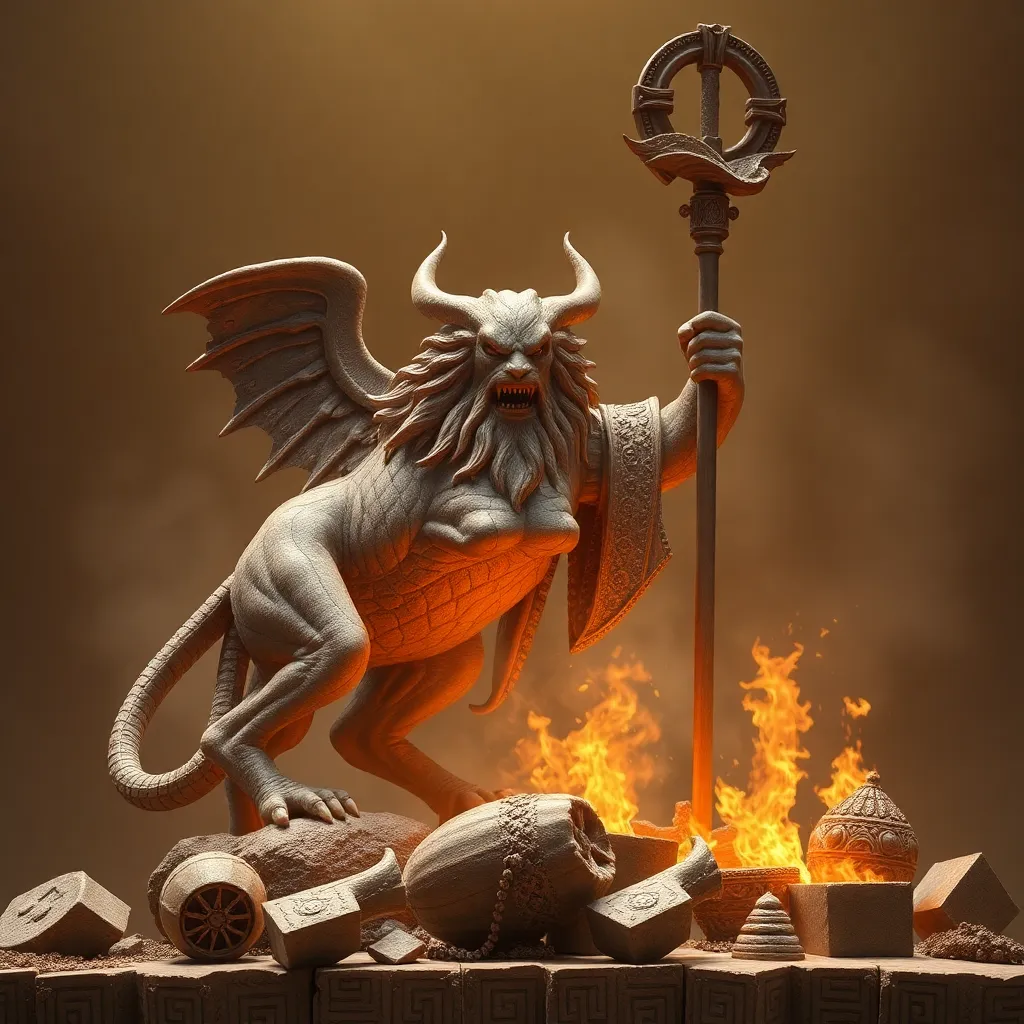The Role of Mythological Creatures in Greek Rituals and Sacrifices
I. Introduction
In Greek mythology, mythological creatures encompass a vast array of beings, from gods and goddesses to fantastical monsters and hybrids. These creatures played a pivotal role in the beliefs and practices of ancient Greeks, embodying various aspects of nature, human emotion, and existential inquiries.
Greek rituals and sacrifices were integral to the culture, serving as a means to communicate with the divine, seek favor, and ensure prosperity. The link between these rituals and mythological creatures is essential for understanding the intricate tapestry of ancient Greek culture and religion.
This article explores the significance of mythological creatures in Greek rituals and sacrifices, highlighting their roles, the associated ceremonies, and the enduring legacy of these practices.
II. The Significance of Mythological Creatures in Greek Beliefs
Mythological creatures in Greek mythology are not merely fanciful beings; they represent deeper meanings and natural phenomena. Their significance can be categorized into several key areas:
- Representation of natural forces and human traits: Creatures often symbolize elemental forces, such as the tempestuous nature of Zeus or the wisdom of Athena. They embody human traits, such as strength, cunning, and beauty, reflecting the complexities of human nature.
- Functions as symbols in religious practices: Creatures serve as symbols in rituals, representing divine will or natural cycles. For example, the snake is often associated with healing and rebirth, linked to deities like Asclepius.
- Mythological hierarchy and its impact on rituals: The hierarchy among mythological beings influences the structure of rituals, where the worship of higher deities often requires the appeasement of lesser beings, creating a complex network of reverence.
III. Major Mythological Creatures and Their Ritualistic Roles
Various mythological creatures held significant roles in Greek rituals, each with distinct characteristics and functions:
- The role of gods and goddesses: Major deities like Zeus and Athena were central to many rituals. Zeus, as the king of the gods, was often honored through sacrifices to ensure favorable weather and harvests, while Athena was revered for her wisdom and protection in warfare.
- The significance of monsters and hybrids: Creatures like the Minotaur and Chimera served as embodiments of chaos and challenges that humanity must confront. Rituals often included narratives that reflected on these struggles, signifying the importance of bravery and intelligence in overcoming adversity.
- The presence of lesser-known creatures: Nymphs and Satyrs represented the spirit of nature and fertility. Rituals dedicated to these beings often involved celebrations of the earth and its bounty, reinforcing the connection between humans and the natural world.
IV. Rituals Associated with Mythological Creatures
Specific ceremonies were dedicated to various mythological creatures, often intertwined with their narratives:
- Specific ceremonies dedicated to particular creatures: For instance, the rites of Dionysus involved ecstatic dances and wine offerings, celebrating the god of fertility and revelry, often incorporating the imagery of Satyrs and Maenads.
- Integration of mythological narratives in ritual practices: Myths were recited or reenacted during rituals, serving to educate participants about the creatures’ significance and the lessons they embody.
- Seasonal festivals and their connection to mythological beings: Festivals like the Eleusinian Mysteries celebrated the agricultural cycle and included rituals honoring Demeter and Persephone, emphasizing the themes of death and rebirth.
V. Sacrifices and Offerings to Mythological Entities
Sacrifices and offerings were crucial in the relationship between the Greeks and their mythological creatures. These practices included:
- Types of sacrifices: Rituals often involved animal sacrifices, libations of wine, or offerings of grain. Each type served a specific purpose, aimed at appeasing the deities or creatures involved.
- The purpose of sacrifices in appeasing or honoring creatures: Sacrifices were meant to gain favor, ensure protection, and seek blessings for prosperity. The act of sacrifice was seen as a means of establishing a reciprocal relationship with the divine.
- Variations in sacrificial practices across different regions: Different city-states had their unique practices, reflecting local beliefs. For instance, the city of Athens had specific rituals dedicated to Athena, while other regions might focus on different deities or creatures.
VI. Case Studies of Notable Greek Rituals
Several notable rituals highlight the connection between mythological creatures and Greek religious practices:
- The Eleusinian Mysteries and Demeter’s myth: This festival was centered around the myth of Demeter and Persephone and included secret rites that symbolized the cycle of life and death.
- The Festival of Dionysus and its theatrical connections: This festival celebrated Dionysus with dramatic performances that often depicted his myths, showcasing the intertwining of theater and ritual.
- Local cults and rituals linked to specific creatures: Various regions had local deities and creatures, leading to unique rituals that reflected the local populace’s beliefs and practices.
VII. The Evolution of Rituals and Their Relevance Today
Over time, Greek rituals evolved due to various influences:
- Changes in ritual practices over time: As Greek society transformed, so too did its rituals, adapting to new cultural and political landscapes.
- The impact of Hellenistic and Roman influences: The arrival of Hellenistic and later Roman cultures brought new elements into existing practices, leading to syncretism in worship.
- Modern interpretations and revivals of ancient rituals: Today, there is a growing interest in reviving ancient rituals, with modern practitioners seeking to reconnect with the spiritual aspects of their heritage.
VIII. Conclusion
In summary, mythological creatures in Greek rituals and sacrifices are deeply woven into the fabric of ancient Greek culture. They represent natural forces, human traits, and complex narratives that shaped the beliefs and practices of the time. The rituals associated with these creatures served to reinforce community bonds, offer explanations for life’s mysteries, and maintain a connection with the divine.
The legacy of these mythological beings continues to resonate in modern culture, reminding us of the profound interplay between mythology, ritual, and sacrifice in ancient Greece. As we explore these ancient practices, we gain insights into the values and beliefs that have shaped human civilization.




